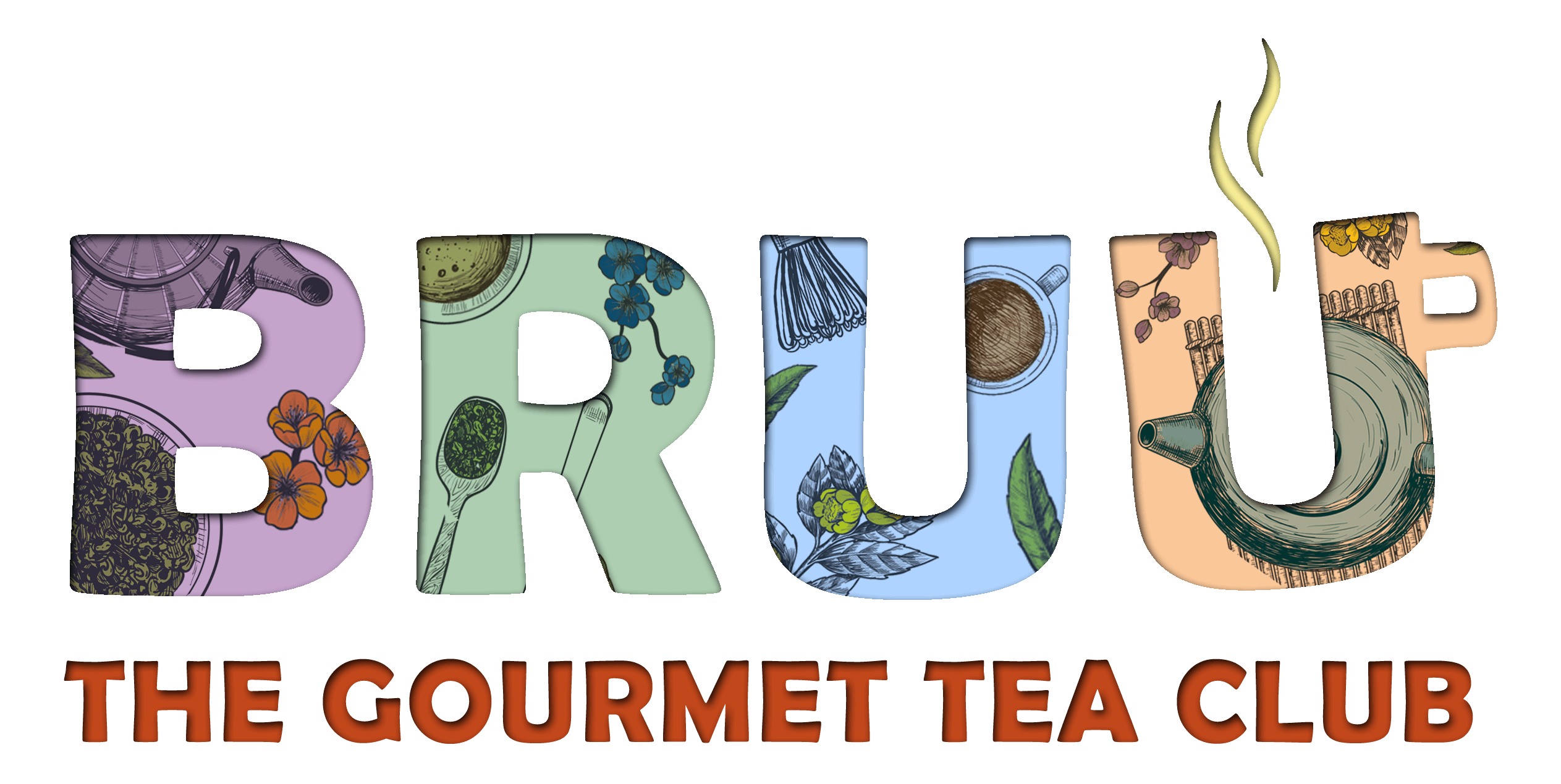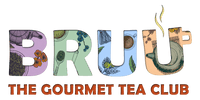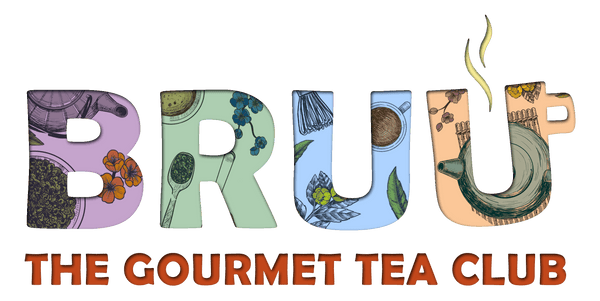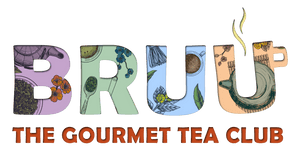Tea and Iron Absorption
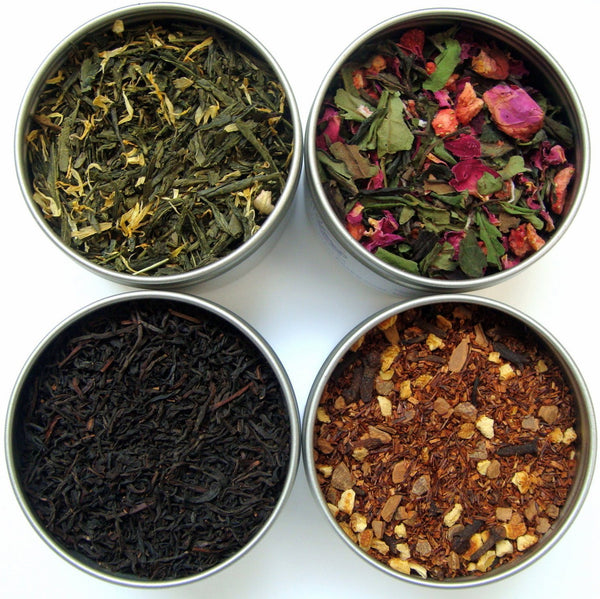
Source Tea Advisory Panel
Introduction
Iron has several vital functions in the body, it’s major role being as an Oxygen carrier in blood haemaglobin and muscle myoglobin. In addition, it is a component of many enzymes and is required for a number of metabolic processes. Deficiency in dietary iron is the most common nutritional deficiency in the world and can ultimately result in anaemia.
Sources of dietary iron
Dietary iron is available in two valence states, Fe2+ (ferrous) and Fe3+ (ferric). The majority of ferrous iron is found in haem iron and the majority of ferric iron is found in non-haem iron.
- Haem iron is present in the haemaglobin and myoglobin of animals and as a result is found in meat, liver, offal and meat products. This form of iron is relatively available and typically 20-30% of haem iron is absorbed from the diet, although this can rise to 40% in situations of iron deficiency[1]. The level of haem iron absorption is relatively unaffected by other dietary factors.
- Non-haem iron is found in plant foods such as cereals, vegetables, pulses, dried fruit, etc and compared to haem iron it is relatively poorly absorbed, typically less than 10% and often under 5%. The absorption of non-haem iron is much more influenced by an individual’s iron status and several factors in the diet that can either inhibit or enhance its absorption.
Approximately 90% of dietary iron in the UK diet is nonhaem iron. Currently it is estimated that between 10 and 15% of dietary iron is bioavailable.
In the average UK diet, iron mainly comes from[2]:-
- Cereal products (44%)
- Meat and meat products (17%)
- Vegetables (10%)
Enhancers of dietary non-haem iron absorption
- Vitamin C found in fruit, fruit juice and vegetables, enhances iron absorption by reducing the ferric iron to the more readily absorbed ferrous form. In addition, it also protects any iron in the ferrous form from being oxidised back to the ferric form.
- Animal products provide an unidentified substance that appears to promote the absorption of non-haem iron.
- Organic acids such as citric acid and lactic acid (found in fermented products such as sauerkraut) have been found in some studies to enhance the absorption of non-haem iron. The nature of this effect has still yet to be established, although the lower pH in the duodenum, caused by these acids, helps to activate phytase (the enzyme responsible for the breakdown of phytate) in these products[3].
Inhibitors of dietary non-haem iron absorption
- Phytate found in the bran of wheat, oats, maize and other cereals strongly inhibit non-haem iron absorption by interacting with it, rendering it less soluble and thus less available for absorption.
- Calcium appears to interfere with the absorption of iron,[4],[5] although the mechanism is unknown.
- Phenolic compounds found in tea, coffee, red wine, some leafy vegetables, nuts and legumes are responsible for the inhibition of iron absorption. It appears to be the galloyl group in these compounds that is responsible for the inhibitory effects.3
Dietary requirements and deficiency
Individual requirements for dietary iron vary according to age, gender and diet. Poor iron intake is common in certain groups in the UK e.g. on average, 25% of British women have a low intake of iron. The proportion is highest in younger women, with 50% of 15-18 years olds, 42% of 19-24 year olds and 41% of 25-34 year olds having an inadequate intake.2
Iron deficiency ultimately results in anaemia, however, functional consequences may occur even in the absence of anaemia,[6] including adverse effects on work capacity, intellectual performance, behaviour and immunological responses. Causes of iron deficiency include low dietary iron intake, poor iron bioavailability and increased requirements due to physiological demands (growth and menstruation).
Data from the National Diet and Nutrition Surveys (NDNS) and the 2000 Health Survey for England indicate that iron deficiency anaemia affects 8% of preschool children; between 10 and 20% of adolescent girls; around 3% of men and 8% of women; and 11–30% of men and 9–20% of women over 65 years[7],[8],[9],[10],[11],[12]
Tea drinking and iron absorption
Tea drinking mainly influences the absorption of non-haem iron as haem iron is relatively unaffected by tea.
The inhibitory effect of drinking tea on iron absorption was first identified in a study that used test meals fed under experimental conditions.[13] Since this time further studies have examined this effect.[14],[15],[16],[17],[18] These studies concluded that tea does have an inhibiting effect on iron absorption, however it has been proposed that findings from experiments using human or animal models based on test meals fed under experimental conditions may not reflect the role of tea when consumed as part of a complex, real diet.[19],[20]
Tea drinking and iron status
Despite tea’s inhibitory affect on non-haem iron absorption, it does not necessarily mean that high tea consumption is associated with an unfavourable iron status at the population level.
In an attempt to draw a conclusion about the effect of tea on iron status, a wide variety of studies with different designs, from different countries, and carried out in different age and gender groups, have been conducted. Results from these studies are conflicting; some have found a higher risk of anaemia amongst tea drinkers compared to non tea drinkers,9,10,[21],[22],[23],[24],[25],[26],[27],[28],[29] while others have shown no such association, [30],[31],[32],[33] both in children and adults.
There are many factors that influence an individual’s iron stores such as genetic factors, other dietary components, timing of tea consumption in relation to consumption of non-haem food source as well as iron stores themselves. All of these need to be taken into account when determining the strength of the association between tea consumption and iron status and as such could account for the conflicting results seen in the population studies. Some authors have also concluded that people could adapt to low iron intakes or low iron bioavailability over time and maintain good iron status.20 This needs to be explored in more detail. Furthermore, it is not clear whether tea drinking is a marker of other dietary practices which lead to poor iron status or whether tea has an independent detrimental effect on haemoglobin and ferritin levels. In addition, the relevancy of the results from studies conducted in developing countries to tea drinking on iron status in the UK needs to be addressed.
A couple of reviews[34],[35] examining the role of tea drinking on iron status have concluded that tea consumption does not influence iron status in healthy individuals who are eating a well balanced diet and who have adequate iron stores as determined by serum ferritin concentrations. Only in populations of individuals with marginal iron status does there seems to be a negative association between tea consumption and iron status. To take into account the current evidence available the following practical advice has been suggested.36
Practical advice for tea drinking in relation to iron status
- There is no evidence to suggest that tea drinking should be restricted in healthy individuals who are not at risk of iron deficiency and are consuming a well balanced, mixed diet.
- People who have a poor iron status should avoid drinking tea with meals and up to at least one hour after the meal. Any adverse effects that tea may have on iron absorption are then likely to be minimised. This restriction should apply to all people who are in the following at-risk age groups - children under 6 years of age, adolescent girls, women aged 18–49 years and women aged 75 years and over, as well as those who are known to have poor iron status.
- Moderate tea drinking (3-4 cups) spread throughout other times of the day is unlikely to have any adverse effect on iron status. The inhibitory effect of tea on iron absorption maybe partially overcome by the simultaneous consumption of animal tissues and Vitamin C.[36]
In Summary…
Tea consumption will not result in iron deficiency for healthy individuals who are consuming a varied and balanced diet.
The absorption of iron from food is generally low and is influenced by a number of factors including the quantity of iron consumed, the chemical form (haem versus non-haem), interaction with other dietary factors and the individual’s physiological condition (status of iron stores, period of growth, menstruation or pregnancy).
Haem iron present in good amounts in meat, offal and meat products is readily absorbed and is unaffected by tea drinking. Non-haem iron found in cereals, vegetables, dried fruit, legumes and nuts is less well absorbed and its absorption is influenced by a wide variety of dietary factors which include enhancers e.g Vitamin C (present in fruit and fruit juice) and animal tissue (meat), and inhibitors e.g. phytate (bran) and tea (polyphenols).
Therefore for those who have a poor iron status or are at high risk of iron deficiency it would be prudent to avoid drinking tea with meals.
Otherwise moderate tea drinking (3-4 cups) spread throughout other times of the day is unlikely to have any adverse effect on iron status, and in fact at this level can actually bring about other health benefits thereby helping to promote overall health and well being.
References:
[1] Cook JD (1990) Adaptation in iron metabolism. American Journal of Clinical Nutrition 51:301-8
[2] Henderson L, Irving K, Gregory J, et al (2003) The National Diet and Nutrition Survey: adults aged 19-64 years. Volume 3: Vitamin and mineral intake and urinary analytes. The Stationery Office. London.
[3] Rossander-Hulthen L, et al (1996) Dietary factors influencing iron absorption- a review. In Hallberg L, Asp N-G, eds. Iron nutrition in health and disease, pp105-15. London: John Libbey
[4] Hallberg L, et al (1991) Calcium: effect of different amounts on non-haem and haem-iron absorption in man. American Journal of Clinical Nutrition 53: 112-119
[5] Hallberg L, et al. (1992) Calcium and iron absorption: mechanism of action and nutritional importance. European Journal of Clinical Nutrition 46: 317-327
[6] Dietary Reference Values for Food Energy and Nutrients for the United Kingdom (1991). Report of the Panel on Dietary Reference Values of the Committeee on Medical Aspects of Food Policy. London: HMSO
[7] Gregory, J., Foster, K., Tyler, H. & Wiseman, M. (1990) The Dietary and Nutritional Survey of British Adults. London: Her Majesty's Stationery Office.
[8] Gregory, J., Collins, D.L., Davies, P.S.W., Hughes, J.M. & Clarke, P.C. (1995) National Diet and Nutrition Survey: Children Aged 1-1/2 to 4-1/2. London: Her Majesty's Stationery Office.
[9] Doyle, W., Crawley, H., Robert, H. & Bates, C.J. (1999) Iron deficiency in older people: interactions between food and nutrient intakes with biochemical measures of iron; further analysis of the National Diet and Nutrition Survey of people aged 65 years and over. Eur. J. Clin. Nutr. 53, 552–559.
[10] Gibson, S.A. (1999) Iron intake and iron status of preschool children: associations with breakfast cereals, vitamin C and meat. Public Health Nutr. 2, 521–528.
[11] Falaschetti, E., Malbut, K. & Primatesta, P. (2002) Health Survey for England 2000: The General Health of Older People and Their Use of Health Services. London: The Stationery Office.
[12] Ruston D, Hoare J, Henderson L, et al (2004) The National Diet and Nutrition Survey: adults aged 19-64 years. Volume 4: Nutritional status (anthropometry and blood analytes), blood pressure and physical activity. The Stationery Office. London.
[13] Disler PB et al. (1975) The effect of tea on iron absorption. Gut 16: 193-200
[14] Rossander, L., Hallberg, L. & Bjorn-Rasmussen, E. (1979) Absorption of iron from breakfast meals. Am. J. Clin. Nutr. 32, 2484–2489
[15] Hallberg, L. & Rossander, L. (1982) Effect of different drinks on the absorption of non-haem iron from composite meals. Hum. Nutr. Appl. Nutr. 36A, 116–123.
[16] Brune, M., Rossander, L. & Hallberg, L. (1989) Iron absorption and phenolic compounds: importance of different phenolic structures. Eur. J. Clin. Nutr. 43, 547–558.
[17] Hurrell, R.F., Reddy, M. & Cook, J.D. (1999) Inhibition of non-haem iron absoprtion in man by polyphenolic-containing beverages. Br. J. Nutr. 81, 289–295.
[18] Reddy M , Hurrell R , Cook J. (2000). Estimation of nonheme-iron bioavailability from meal composition. Am. J. Clin. Nutr., 71: 937-943
[19] Powell JJ, et al (1994) Mechanisms of gastrointestinal absorption: dietary minerals and the influence of beverage ingestion. Food Chemistry 51: 381-8
[20] Hunt, J.R. & Roughead, Z.K. (2000) Adaptation of iron absorption in men consuming diets with high or low iron bioavailability. Am J. Clin. Nutr. 71, 94–102.
[21] Merhav H, et al (1985) Tea drinking and microcytic anaemia in infants. American Journal of Clinical Nutrition 41: 1210-3
[22] Wilson C, et al (1999) Iron deficiency anaemia and adverse dietary habits in hospitalised children. New Zealand Medical Journal 112: 203-6
[23] Kuvibidila S, Mbele V , Yu L , Ode D , Warrier R. (1992). The influence of tea consumption on iron status and anthropometry in young Zairean children. Clin. Res., 40: 631A-.
[24] Watt, R.G., Dykes, J. & Sheiham, A. (2000) Drinks consumption in British pre-school children: relation to vitamin C, iron and calcium intakes. J. Hum. Nutr. Dietet. 13, 13–18.
[25] Mehta et al (1992) Contribution of coffee and tea to anaemia among NHANES II participants. Nutrition Research 12: 209
[26] Razagui IB (1991) Iron status in a group of long-stay mentally handicapped menstruating women: some dietary considerations. European Journal of Clinical Nutrition 45: 331-340
[27] Galan, P., Hercberg, S., Soustre, Y., Dop, M.C. & Dupin, H. (1985) Factors affecting iron stores in French female students. Hum. Nutr.: Clin. Nutr. 39C, 279–287.
[28] Dangour, A.D., Hill, H.L. & Ismail, S.I. (2001) Haemoglobin status of adult non-pregnant Kazakh women living in Kzyl–Orda region, Kazakhstan. Eur. J. Clin. Nutr. 55, 1068–1075.
[29] Soustre Y , Dop M , Galan P , Hercberg S. (1986). Dietary determinants of the iron status in menstruating women. Int. J. Vit. Nutr. Res., 56: 281-286.
[30] Thane CW , Walmsley CM , Bates CJ , Prentice A, Cole TJ. (2000). Risk factors for poor iron status in British toddlers: further analysis of data from the National Diet and Nutrition Survey of children aged 1.54.5 y. Public Health Nutr., 3: 433-440.
[31] Cowin I, Emmond P, Emmett P, and the ALSPAC Study Team . (2001). Association between composition of the diet and haemoglobin and ferritin levels in 18-month-old children. Eur. J. Clin. Nutr., 55: 278-286.
[32] Van de V, ijver LPL , Kardinaal AFM, Charzewska J, Rotily M, Charles P, Maggiolini M, Ando S, Vaananen K. (1999). Calcium intake is weakly but consistently negatively associated with iron status in girls and women in six European countries. J. Nutr., 129: 963-968.
[33] Root M , Stephenson L, Parker R, Campbell T. (1999). Iron status of middle-aged women in five counties of rural China. Eur. J. Clin. Nutr., 53: 199-206.
[34] E H M Temme and P G A Van Hoydonck (2002) Tea consumption and iron status. EJCN 56; 379-386
[35] M. Nelson & J. Poulter (2004) Impact of tea drinking on iron status in the UK: a review. J Hum Nutr Diet 17; 43-54
[36] Hamdauoui M, et al (1995) Effect of different levels of an ascorbic acid and tea mixture on non-haem iron absorption from a typical Tunisian meal fed to healthy rats. Annals of Nutrition Metabolism 39: 310-6
